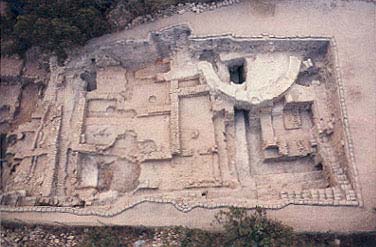Image Details

Terry Smith
The sewer contained a grisly find: the remains of nearly 100 infants. Based on their bone size and dental development, the infants were newborns killed very soon after birth. The ancient Greeks and Romans considered infanticide, especially through abandonment and exposure to the elements, the most effective form of birth control. In this, as with their attitudes towards sexual relations, they differed from their Jewish and Christian counterparts. After Christianity was declared the official religion of the Roman empire, infanticide was banned. The remains at Ashkelon show that the practice continued nonetheless.
The white area at lower left in the photo is the plastered cistern that contained the second-century B.C. ceramic wares.
